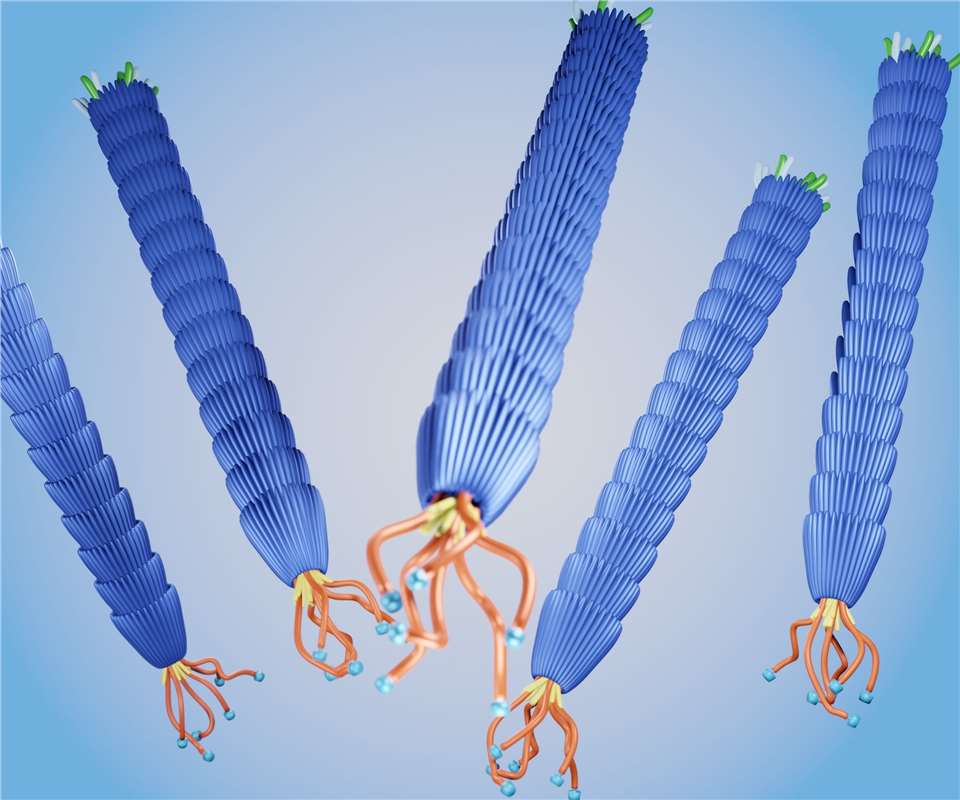Phage display libraries represent an emerging biotechnological frontier, with antibody libraries being the most advanced and widely adopted among them. Through phage display technology, exogenous proteins maintain their independent spatial structure and biological activities. This versatile technology finds applications in antibody development, vaccine creation, enzyme inhibitor screening, medical diagnosis, and therapy. Drawing from our extensive practical experience, Creative Biolabs provides comprehensive services to support the construction of various phage display libraries.

Phage libraries, serving as vectors for gene cloning, are the foundation of phage display libraries. This cutting-edge technology involves fusing exogenous proteins or polypeptides with phage shell proteins, effectively presenting them on the phage's surface while preserving specific spatial conformations. This presentation is harnessed for the targeted screening of specific proteins or polypeptides.
For library construction, nucleic acid fragments of different sequences can be obtained through synthetic library construction methods, cDNA library construction methods, and DNase I random DNA hydrolysis. Phage display systems for library construction include single-stranded filamentous phage display systems, λ phage display systems, T4 phage display systems, and T7 phage display systems. The cDNA method involves the following steps: mRNA extraction, cRNA reverse transcription, design of suitable primers, PCR amplification of gene sequences using cDNA as a template, gene cloning into phage vectors; electrotransfection into recipient cells, assisting phage super-staining, and collecting the supernatant, which constitutes the phage display library.
Numerous types of phage display libraries are available, including peptide libraries, immune antibody libraries, scaffold libraries, and more. Premade antibody libraries can significantly expedite researchers' efforts and time, thereby advancing progress in related fields.
Phage display peptide libraries have multifarious applications. These include B-cell and T-cell epitope mapping, the selection of bioactive peptides for receptor or protein binding, the creation of disease-specific antigen mimics, peptides for non-protein target binding, cell-specific or organ-specific peptides, and the development of peptide-mediated drug delivery systems, among other applications.
The immune antibody library relies on immunization with immunogenic antigens for library construction. This method emphasizes the use of soluble, correctly folded recombinant proteins. Alternatively, direct DNA immunization can be employed. To enhance the likelihood of obtaining antibodies targeting a specific epitope, it is recommended to immunize multiple inbred animals, each generating a unique immune response. This approach yields a broader array of single domain antibodies from which the most effective antibody can be selected.
The natural world provides a rich source of protein backbones, which serve as vital tools for various biotechnological and pharmaceutical research. Constructing optimized, selectively randomized libraries based on rational protein backbone structures is crucial for advancing the research and application of engineered protein backbones. The judicious choice of protein backbones, display methods, and screening techniques further accelerates research and development in this domain.
Phage Display Antibody Library Introduction
Scaffold Library Introduction
Peptide Library Introduction
cDNA Library Introduction
Creative Biolabs has a wealth of knowledge and experience in the antibody phage display. We are eager to share our expertise and insights to support your endeavors in the realm of phage display libraries.
All listed services and products are For Research Use Only. Do Not use in any diagnostic or therapeutic applications.